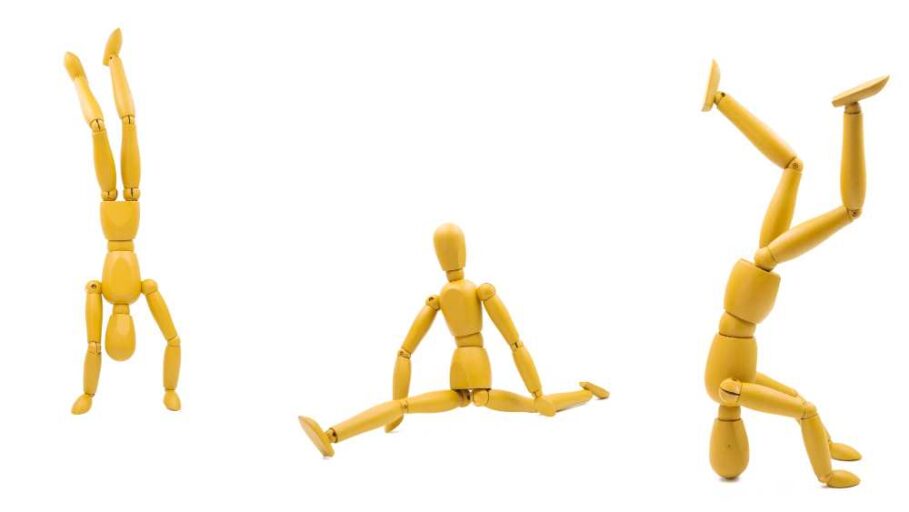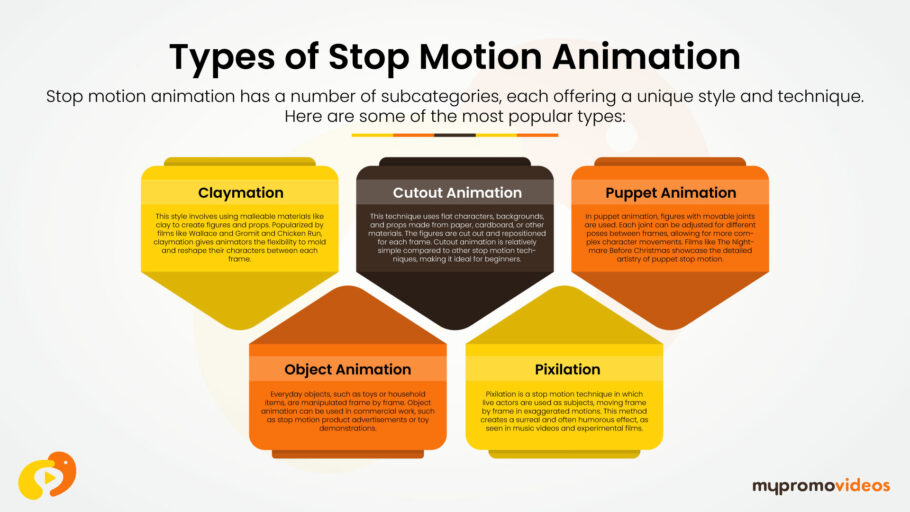Last Updated on September 26, 2024
Article Contents
What is Stop Motion Animation?
Stop motion animation is a captivating technique that brings still objects to life by moving them in small increments between individually photographed frames. When these frames are played in a sequence, they create the illusion of movement. It’s a hands-on animation method that’s been used for over a century in films, commercials, and creative projects, allowing creators to tell unique stories using real-world objects like clay figures, puppets, or even household items.
Introduction to Stop Motion Animation
Stop motion animation is a form of frame-by-frame animation that involves taking a series of still photographs of objects, each slightly repositioned between shots, and then playing them back at a speed that creates the illusion of motion. It’s a tactile, highly interactive style of animation that invites creators to manipulate physical objects and scenes rather than relying solely on digital tools.

Unlike traditional 2D animation, where characters are drawn on paper or digitally, stop motion is all about the physical movement of actual objects—whether that’s clay, toys, or paper cutouts. This direct engagement with objects gives stop motion a distinct charm and visual aesthetic, often recognized for its slightly “jerky” movement, which adds to its unique appeal.
Historical Overview of Stop Motion Animation
Stop motion animation has been around for more than a century, evolving significantly over time. The technique began in the late 1800s, with The Humpty Dumpty Circus (1898) being one of the earliest known uses of stop motion. Filmmakers would move toy figures and animals frame by frame to mimic the actions of a circus performance.
In the early 20th century, stop motion was popularized in the film industry. The 1933 classic King Kong became a groundbreaking moment for stop motion, featuring a stop-motion ape that was so lifelike that it terrified audiences. From there, the technique was further refined and used in special effects-heavy films such as Jason and the Argonauts (1963), where stop motion brought mythical creatures to life.
The 1990s saw a revival of stop motion animation with films like The Nightmare Before Christmas (1993), directed by Henry Selick and produced by Tim Burton, as well as James and the Giant Peach (1996). These films set a new standard for what was possible in stop motion, combining detailed craftsmanship with innovative storytelling.
More recently, films like Coraline (2009) and Kubo and the Two Strings (2016) have continued to push the boundaries of stop motion, proving that this classic technique can still hold its own in a world dominated by computer-generated imagery (CGI).
How Stop Motion Animation Works
Stop motion animation operates on the simple principle of creating movement by capturing a series of still images, with each image representing a single frame of movement. When these frames are played back quickly—typically at 24 frames per second—they produce the illusion of continuous motion.

Key Techniques and Processes
Creating a stop motion video involves several steps, from conceptualization to execution. Here’s a closer look at the process:
- Pre-Production and Planning: Just like in any animation project, planning is key in stop motion. This includes storyboarding the action, deciding on the types of materials and objects to be used, and preparing the set.
- Setting Up the Scene: The background, lighting, and props are set in place. Consistency is crucial—keeping lighting and the placement of objects uniform throughout the filming process is essential for maintaining the illusion of fluid movement.
- Shooting the Frames: Objects are moved in small increments, and each change is captured by taking a photograph. For smooth animation, the objects should be moved only slightly between frames—often no more than a few millimeters. Typically, animators aim for 24 frames per second (FPS), meaning 24 individual photos are needed for just one second of animated video.
- Editing and Compiling: Once all the photos are taken, they’re imported into stop motion software, where they are arranged in sequence. The software plays these images back at the desired speed to create the illusion of movement.
Types of Stop Motion Animation

Stop motion animation has a number of subcategories, each offering a unique style and technique. Here are some of the most popular types:
- Claymation: This style involves using malleable materials like clay to create figures and props. Popularized by films like Wallace and Gromit and Chicken Run, claymation gives animators the flexibility to mold and reshape their characters between each frame.
- Cutout Animation: This technique uses flat characters, backgrounds, and props made from paper, cardboard, or other materials. The figures are cut out and repositioned for each frame. Cutout animation is relatively simple compared to other stop motion techniques, making it ideal for beginners.
- Puppet Animation: In puppet animation, figures with movable joints are used. Each joint can be adjusted for different poses between frames, allowing for more complex character movements. Films like The Nightmare Before Christmas showcase the detailed artistry of puppet stop motion.
- Object Animation: Everyday objects, such as toys or household items, are manipulated frame by frame. Object animation can be used in commercial work, such as stop motion product advertisements or toy demonstrations.
- Pixilation: Pixilation is a stop motion technique in which live actors are used as subjects, moving frame by frame in exaggerated motions. This method creates a surreal and often humorous effect, as seen in music videos and experimental films.
Creating Your First Stop Motion Video
Now that you understand the basics, let’s explore how you can create your own stop motion animation from scratch. While the process requires patience and attention to detail, the results are highly rewarding.

Essential Equipment Needed
You don’t need expensive equipment to create a compelling stop motion video. Here’s a breakdown of the essential tools required to get started:
Camera and Lighting
For stop motion animation, a good-quality camera is essential. A DSLR or mirrorless camera works well for professional results, but if you’re just starting out, a smartphone with a high-quality camera can suffice. The key is to ensure the camera stays in a fixed position using a tripod to prevent shaky footage.
Lighting is just as important. Consistent lighting is crucial because any variations between frames will create flickering in the final video. Natural lighting works, but controlled lighting with lamps or softboxes gives you more consistency.
Background and Props
The background sets the scene for your stop motion video. You can use a simple solid color backdrop or design an intricate set depending on your project’s needs. Props and characters can be made from clay, paper, or even toys. The key is to keep them lightweight and easy to manipulate for each frame.
For example, in claymation, characters are usually built with a wire armature covered in clay, allowing the figures to hold poses and be easily adjusted between frames.
Step-by-Step Guide to Making a Stop Motion Video
Here’s a simple, step-by-step guide to help you get started with your first stop motion video:
Planning Your Animation
Before filming, you need a plan. Storyboarding is essential for stop motion animation, as it allows you to map out each shot and movement. Decide on the duration of your video and the number of frames required (remember that 24 frames typically equal one second of animation). Sketch out each scene and movement to give you a clear direction during filming.
Shooting the Frames
Once your scene is set and the characters or objects are ready, begin taking the frames. Move the objects in small, consistent increments between each photo. Take multiple shots for each subtle movement to ensure smoother animation.
Remember, the smaller the movement between frames, the smoother the final video will look. For beginners, aiming for 12 frames per second is a good starting point, gradually working up to 24 as you gain more experience.
Editing and Finalizing Your Video
After capturing your frames, it’s time to edit and compile them into a video. Import the images into animation software like Stop Motion Studio or Blender. Arrange the frames in order, set the frame rate, and preview your animation. Add any final touches such as sound effects, voiceovers, or background music to enhance the video.
How to Choose the Right Software for Your Project
There are many free and paid options available for editing and compiling stop motion animations. Here’s how to choose the best software for your needs:
Considerations Based on Skill Level
If you’re a beginner, opt for software that is easy to navigate. Stop Motion Studio is highly recommended for newcomers due to its user-friendly interface and built-in features like onion skinning and frame-by-frame editing.
For more experienced animators, Dragonframe offers advanced features such as camera controls and audio synchronization, while Blender provides professional-grade tools for animating, editing, and rendering complex stop motion projects.
Tips for Maximizing Software Capabilities
- Use Onion Skinning: Many stop motion software options include an onion skinning feature, allowing you to view the previous frame while positioning the next. This helps ensure smooth, consistent movement.
- Adjust Frame Rates: Play around with the frame rate to control the speed of your animation. For example, a higher frame rate (24 FPS) results in smoother animation, while a lower frame rate gives a more stilted, stylized look.
- Integrate Sound and Music: Enhance your animation by adding music, sound effects, or narration. Syncing sound with movement creates a more immersive experience for viewers.
Conclusion
Stop motion animation is a timeless art form that continues to inspire and engage audiences of all ages. Whether you’re a beginner trying your hand at claymation or an experienced animator looking to experiment with puppet animation, stop motion provides endless creative possibilities. With the right tools, planning, and patience, you can bring still objects to life and create a stop motion video that tells a compelling story.
So, grab your camera, set up your scene, and start creating your own stop motion animation—one frame at a time!

